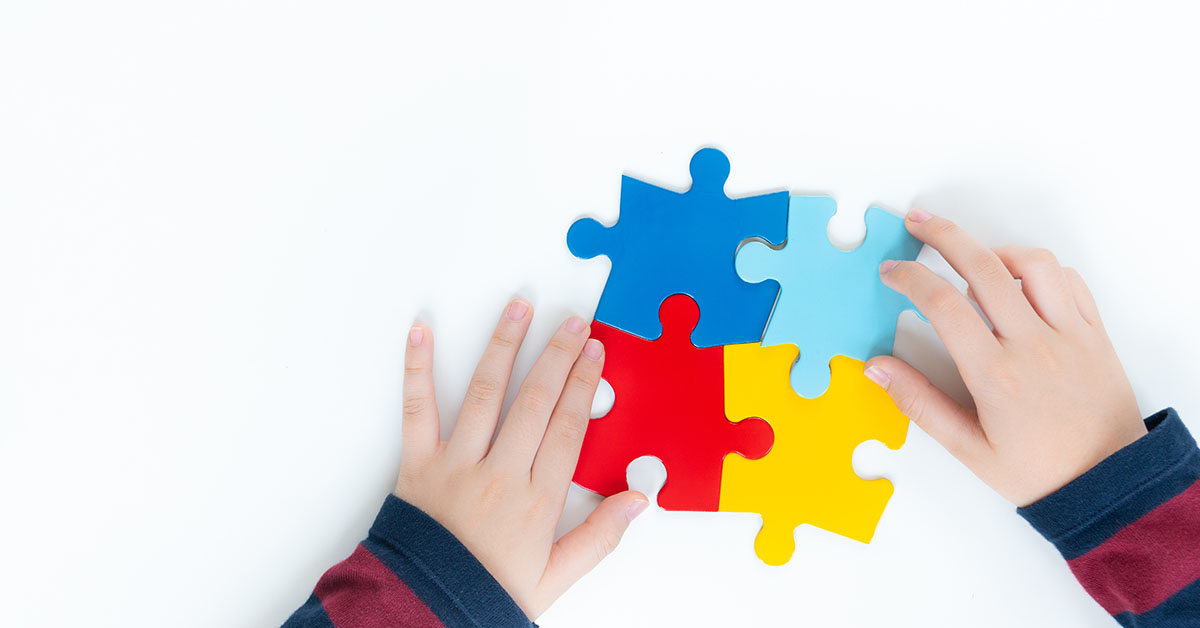Innovative Therapies and Therapies: Advancements in Autism Study
Innovative Therapies and Therapies: Advancements in Autism Study
Blog Article
Checking Out Autism: Methods for Efficient Communication and Interaction
Effective communication and communication with people on the autism spectrum require a detailed understanding of their distinct demands and preferences. The details of these methods disclose further considerations that merit exploration, specifically in how they can be adjusted to varied contexts and private experiences.
Recognizing Autism Spectrum Problem
Autism Spectrum Problem (ASD) incorporates a variety of neurodevelopmental problems identified by challenges in social communication, communication, and repetitive habits. The term "range" reflects the varied symptoms and differing degrees of severity experienced by people with ASD. While some may display considerable disabilities, others might present high-functioning traits, allowing for better independence in every day life.
The onset of ASD typically happens in very early childhood, with indications commonly recognizable by age 2. Very early signs may include delayed speech development, limited eye call, and difficulties in recognizing social cues. The accurate etiology of ASD remains uncertain, research suggests a mix of genetic and environmental aspects plays an essential duty in its development.
As an outcome, interventions and support tailored to private needs are crucial for promoting interaction and social skills. Recognizing the intricacy of ASD is important for advertising understanding, approval, and efficient strategies that help with significant communications with people on the range.

Importance of Clear Interaction
Efficient communication is important for promoting understanding and connection, especially for individuals with Autism Spectrum Condition (ASD) Clear communication not only facilitates social communications but also improves the person's ability to reveal their needs, emotions, and thoughts. For people with ASD, the nuances of language can often be challenging; therefore, making use of uncomplicated and unambiguous language is crucial.
Additionally, clear interaction aids decrease stress and stress and anxiety that may occur from misconceptions. When messages are shared in a consistent and straight manner, individuals with ASD are much better outfitted to analyze information precisely, which can significantly boost their social engagement and involvement in numerous settings.
Developing regimens and utilizing aesthetic supports can better bolster clear interaction. These techniques give individuals with foreseeable frameworks that aid comprehension and retention of information. Furthermore, actively being and listening individual during interactions advertises an encouraging atmosphere where people with ASD feel valued and understood.
Ultimately, focusing on clear communication not just empowers people with ASD yet additionally fosters even more meaningful links with their peers, caretakers, and the larger neighborhood, leading the way for collaborative relationships and inclusive communications. - autism
Non-Verbal Communication Methods
Interaction expands beyond words, and for individuals with Autism Spectrum Disorder (ASD), non-verbal cues play a considerable function in interactions. Non-verbal communication strategies can consist of faces, motions, body movement, and eye call, all of which function as vital components for communicating intentions and feelings.
Understanding and translating these non-verbal signals can enhance interactions with individuals with ASD. For circumstances, a warm smile or open pose can create a welcoming atmosphere, motivating engagement. Using aesthetic aids-- such as image cards or symbols-- can link interaction voids and aid convey messages extra properly.
It is additionally important to be mindful of individual space, as individuals with ASD may have different convenience levels regarding proximity. Observing their responses to physical nearness can notify appropriate modifications.

Producing Encouraging Environments
Producing an encouraging environment is critical for cultivating positive communications and enhancing the health of individuals with Autism Spectrum Disorder (ASD) Such atmospheres can considerably reduce anxiousness and produce a feeling of safety, enabling people to reveal themselves more freely.
To achieve this, it is vital to take into consideration sensory sensitivities that individuals with ASD may experience. Modifying the physical space to include soft lights, minimal background noise, and comfy seating can produce a relaxing atmosphere. In addition, making use of consistent regimens and clear aesthetic timetables can aid individuals anticipate transitions and lower uncertainty, additional promoting comfort.
Social spaces need to be structured to lessen frustrating stimuli while giving possibilities for interaction in favored tasks. Assisting article in areas marked for quiet time can additionally act as a sanctuary throughout minutes of tension. Importantly, integrating components of choice equips individuals, enabling them to work out firm in their atmosphere.

Motivating Social Interactions
Promoting social interactions among individuals with Autism Spectrum Disorder (ASD) needs deliberate methods that focus on comfort and involvement. Developing foreseeable regimens can help lower anxiety, making social settings more approachable. Producing organized environments with specified responsibilities and functions enables people to involve without the overwhelming stress of unstructured social characteristics.
Integrating rate of interests and staminas into social tasks can serve as a driver for communication. Organizing group activities around shared pastimes or subjects of attraction can help with natural Full Report conversations and connections. Furthermore, using visual supports, such as photographic schedules or social scripts, can aid in recognizing social hints and assumptions.
Designing suitable social actions is vital - autism. Peers and adults ought to show efficient interaction methods, including energetic listening and turn-taking. Role-playing circumstances can also provide a secure room for people to practice these abilities
Last but not least, promoting peer connections via comprehensive methods is important. Urging inclusive playdates or team trips can create possibilities for socialization in a comfortable setup. By carrying out these educators, caretakers and methods can dramatically improve social interactions for people with ASD, advertising their total social growth and well-being.
Verdict
In conclusion, reliable interaction and interaction strategies are essential for supporting individuals with Autism Range Disorder. Ultimately, these strategies encourage individuals with autism to browse social landscapes, advertising their general health and making it possible for the advancement of long lasting partnerships.
Reliable interaction and communication with individuals on the autism click this link spectrum necessitate a thorough understanding of their unique requirements and choices. Clear communication not only facilitates social interactions yet additionally enhances the person's capacity to reveal their needs, thoughts, and emotions.Fostering social interactions amongst people with Autism Range Problem (ASD) needs deliberate techniques that prioritize convenience and interaction. By implementing these caretakers, instructors and approaches can considerably boost social interactions for individuals with ASD, promoting their general social advancement and health.
In conclusion, reliable communication and interaction approaches are important for sustaining individuals with Autism Spectrum Problem.
Report this page